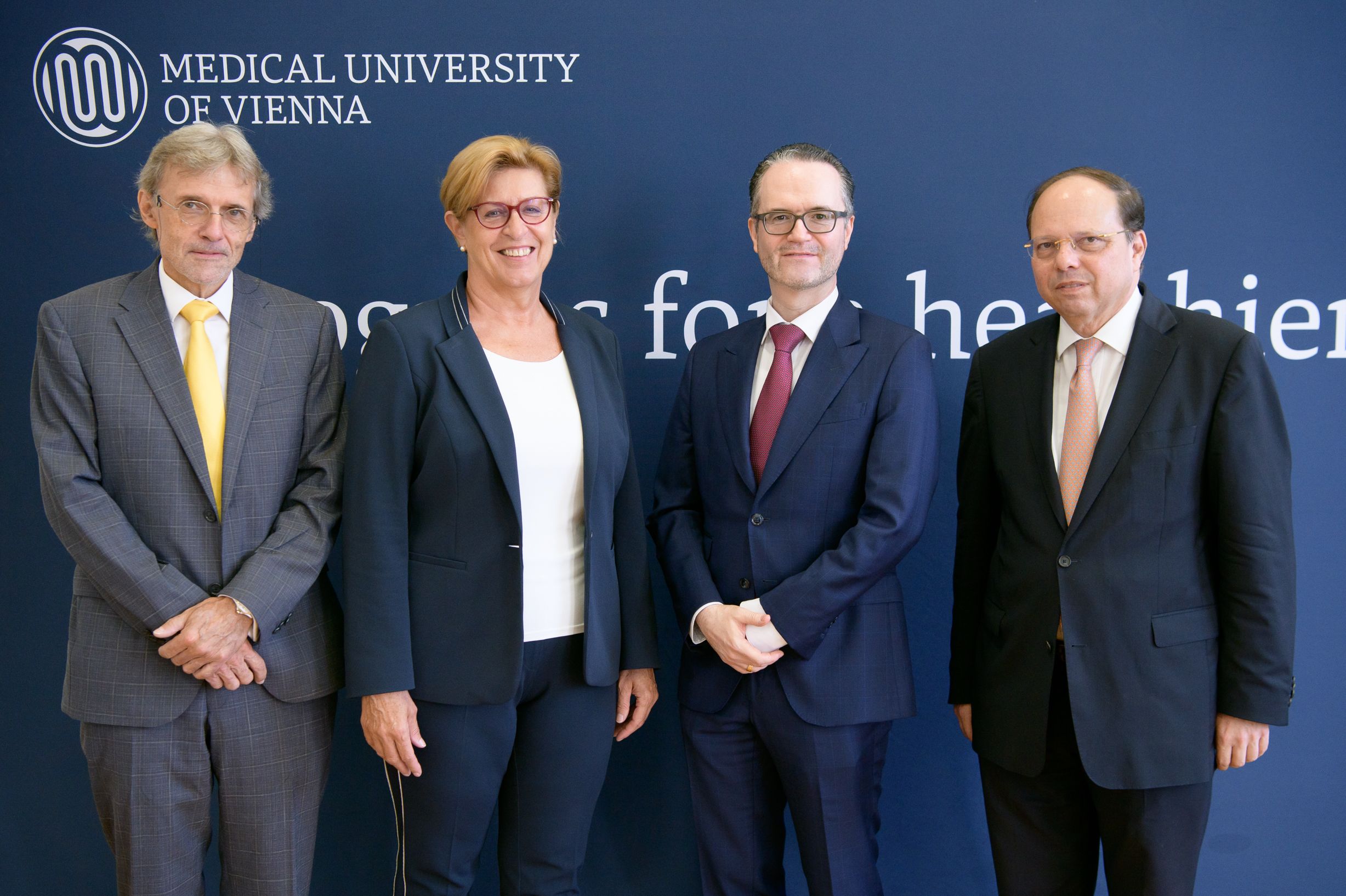
Vienna, 17 September 2019 – Since 2015, the Patient Safety Platform, together with its partners from Germany and Switzerland, has been calling on all actors in the healthcare system to run their own campaigns to promote patient safety on 17 September every year. In its 72nd meeting held this summer, the World Health Assembly, which is the decision-making body of the World Health Organization (WHO) decided to upgrade this date to annual World Patient Safety Day. The first World Patient Safety Day will therefore be held on 17 September 2019. This year's motto is “Safety culture on all levels" and illustrates the multi-faceted nature of patient safety. A consistent process to improve patient safety is also important in Austria and requires daily commitment on the part of everyone involved in the healthcare system. This was the message conveyed at a joint press conference held by the Patient Safety Platform, the Medical University of Vienna, the Austrian Medical Association and the Institute for Ethics and Law in Medicine.

The President of the Patient Safety Platform, Brigitte Ettl, says, "We are delighted that WHO has taken up the idea we proposed together with our Swiss and German partners. On 17 September every year, we will remind people throughout the world of the importance of patient safety and the safety of staff in the healthcare system."
Patient safety – a major focus for 20 years
The publication of the US Institute of Medicine (IOM) study entitled "To err is human" in 1999 made a major contribution to raising awareness about patient safety in routine medical practice. This report found that between 44,000 and 98,000 patients die in American hospitals every year as a result of avoidable errors (adverse events). If one were to transpose the figures from international studies onto Austrian hospitals, that would mean approximately 245,000 incidents a year in hospitals and approximately 2,900 – 6,800 hospital deaths. Whatever the case, these figures justify a consistent effort towards improving patient safety.
Patient safety has many faces
In order to establish a safety culture, it is necessary to engage the day-to-day commitment of everyone within the healthcare system. The Patient Safety Platform therefore deliberately chose the theme of "Safety culture on all levels", in order to reflect the multi-faceted nature of World Patient Safety Day. Patient safety is an overarching issue, involving managers, staff, patients and their relatives and can include many different topics such as digitisation, communication, drug safety, hygiene and patient empowerment. What is often forgotten is that patient safety also equates to staff safety.
Patient safety is becoming increasingly important
The term "Patient Safety" is now an integral part of the healthcare sector. It has also been incorporated into many pieces of legislation. In an increasingly complex healthcare system, much more attention is being paid to risk awareness, error management and quality issues – the importance of patient safety has grown rapidly. Patient safety is an issue everywhere that patients are cared for. The premise that patient safety can only be successfully improved by means of comprehensive evaluation and monitoring of the relevant procedures and structures, has been reflected by national measures and various projects.
Patient safety requires research
"At the Medical University of Vienna, it is important to us to research new process pathways to improve patient safety in the context of a complex hospital operation," explains Klaus Markstaller, Head of the Department of Anesthesia, Critical Care and Pain Medicine at MedUni Vienna/Vienna General Hospital. "A particular challenge in this field of research is interdisciplinary and interprofessional networking, which is why MedUni Vienna has formed a joint task force and steering group with Vienna General Hospital, which is open to all groups of medical professionals and all disciplines at MedUni Vienna and Vienna General Hospital. The aim is to achieve greater visibility and to develop common Best Practice models."
Patient safety requires practice
Since it was established, the Patient Safety Platform has focused on four central aspects of patient and staff safety: patient empowerment, communication, drug safety and hygiene. Important tools have been developed and incorporated into routine practice. An internal process of expert consultation shows the high quality of the results. As well as projects, ongoing working groups have been established to look at current themes of patient and staff safety.
Patient safety requires leadership
Managers need an incentive to implement tools for increasing patient safety. Currently, implementation often fails due to the absence of such incentives within the system. Ettl leads by example and speaks from her own experience of daily practice in the hospital: "In my capacity as Medical Director in Hietzing Hospital, I am confronted by patient and staff safety on a daily basis. Ongoing communication and good role models are essential for ensuring that patient safety concepts and ideas are actually implemented. Patient and staff safety are a question of management and managers must set a good example at all times. Safety concerns must always be taken seriously. My own team must be confident that they can bring any concerns to me. Good communication within the healthcare system also includes transparency when it comes to dealing with errors."
Patient safety comes at a price
Studies indicate that 15% of hospital costs in OECD countries can be attributed to inadequate patient safety. Patient safety always suffers as a result of cost-saving measures and so needs more financial resources to be put into the healthcare system.
Thomas Szekeres, President of the Austrian Medical Association (ÖAK), explains: "Patients safety benefits when doctors have appropriate working and rest times. A reduction in the working week to 48 hours was long overdue and was absolutely in the interests of patient safety. The problem is that, although hospital working hours have been reduced, the number of staff has not been correspondingly increased. The result is a high workload and heavy concentration of work in hospitals. However, an assembly-line model is counter-productive when it comes to patient safety. Having too few staff increases the likelihood of mistakes being made. If we want to have better patient-based care, we have to improve general working conditions for doctors."
Patient safety requires rules
There is no codification of patient rights in Austria but rather these are anchored in several different laws. Numerous Austrian medical regulations have already focused on treatment safety and, even today, the range of topics relating to patient safety is spread over a large number of regulations. Safeguarding of patients rights is essential in order to guarantee patient safety.
Patient safety requires an open error culture
"Despite numerous procedures and tools, it is always possible for errors to occur in medical treatment. In such cases, the crucial thing is how the people involved respond. There is no doubt that patients who have been injured should receive appropriate damages or compensation. On the other hand, it is also important to support the health professionals who have made the errors. This is the only way to get to the bottom of what has happened so as to prevent an error happening again," explains Gerhard Aigner from the Institute for Ethics and Law in Medicine.
Patient safety requires attentiveness
Empowered patients are of central importance in a safe healthcare system. Patients can only make an active contribution to their successful treatment if they are well informed. Anyone who is interested can find the Austrian activities relating to WHO World Patient Safety Day on a map. 49 hospitals, clinics and therapy centres are providing information relating to Patient Safety Day.